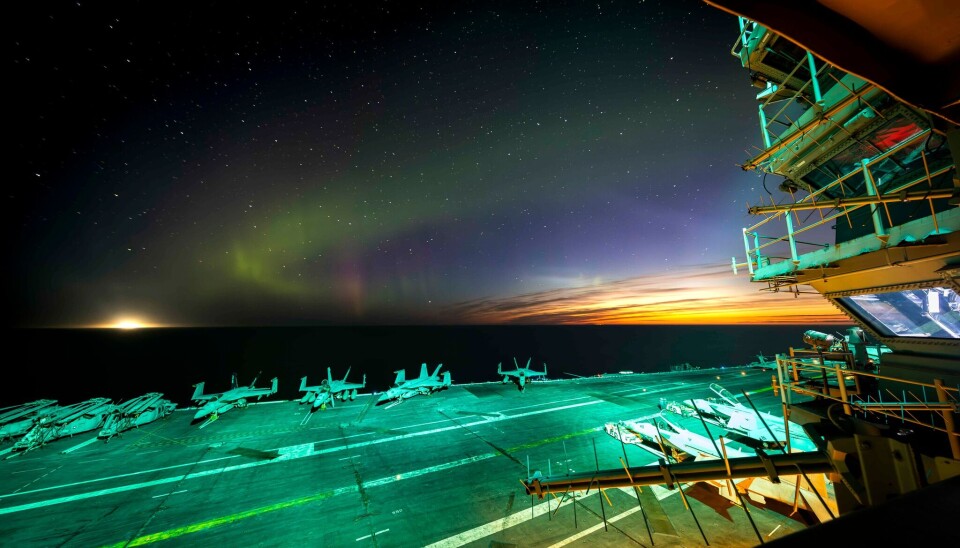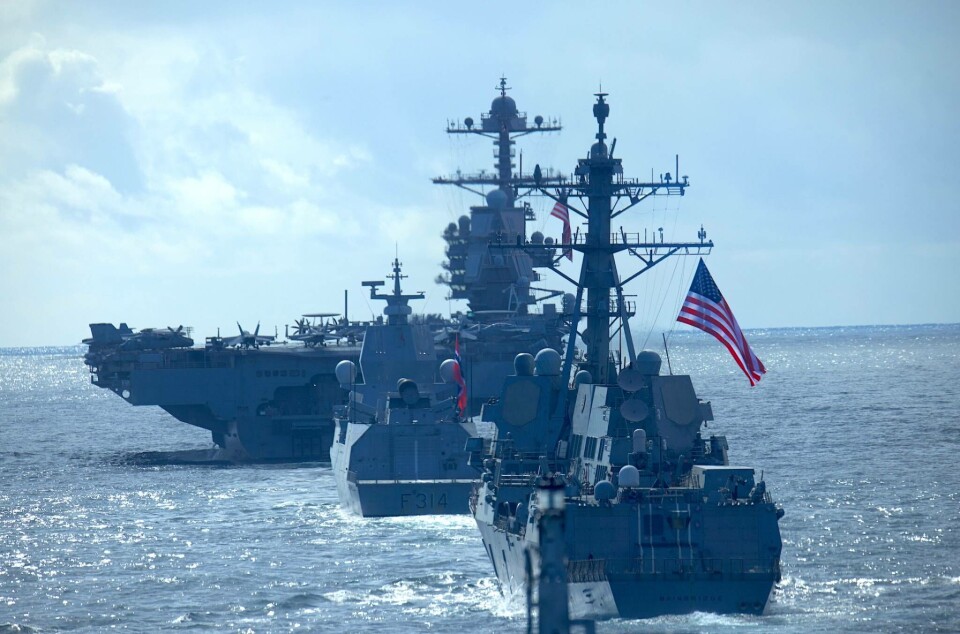NATO warships sail into Barents Sea
"It is important for us to train together and have allied naval presence outside our northern coast," says Brynjar Stordal, spokesperson for Norway's joint headquarters.
As of Friday morning, a multi-national group of naval vessels sailed east of North Cape in the Barents Sea. The Norwegian frigate Thor Heyerdal leads the way, followed by the naval logistic vessel Maud and two US Navy ships.
Military spokesperson Brynjar Stordal confirms to the Barents Observer that the naval vessels are operating together north of Finnmark.
"We want to show our presence with allied forces in the northern part of Norway," Stordal says in a phone interview.
According to online AIS tracking services, the naval group was around noon inside Norwegian territorial waters very close to the North Cape. At the nearest point, the Thor Heyerdal sailed less than one nautical miles from the steep cliff that forms Europe's northernmost tourist trap.
The waters here are of strategic importance in the bigger power game between NATO and Russia, just like during the days of the Cold War.
It is here, from North Cape, via Bear Island and north to Svalbard that the shallow Barents Sea meets the deeper Norwegian Sea.
In case of an escalating conflict the Russian Navy has the ambition to taking control of the sea in the maritime areas east of this imaginary line, and they have a sea denial ambition in the maritime areas further west and south, which are deeper than the Barents Sea.
Of key importance for Moscow in case of conflict is to ensure the survivability of its second-strike nuclear assets, the ballistic missile submarines based with the Northern Fleet on the Kola Peninsula.
In this scenario, sailing west of North Cape will make it much harder for NATO to track them in the deeper parts of the North Atlantic.
As reported by the Barents Observer earlier this week, all three Northern Fleet Yasen-class multipurpose submarines are currently at sea.
The warships that as of Friday are east of North Cape have earlier this week sailed together with the US Navy's USS Gerald R Ford strike group that moved north from the North Sea into the Norwegian Sea.

The USS Gerald R Ford is the world's largest warship, but is not following the Norwegian-led voyage into Barents Sea. The naval vessels, however, are maintaining operational contact with each other, although the giant aircraft carrier is still in the Norwegian Sea.

When the group operated in the North Sea and the Norwegian Sea, the USS Gerald R Ford was followed by three US Navy destroyers.
Other NATO warships that sailed together with the US carrier group earlier this week included the Italian frigate Carabiniere, the Danish frigate Vædderen and the US logistics supply ship Arctic.
Only the Norwegian vessels were sailing with their AIS turned on when they were in the Barents Sea on August 29.
Last fall, the two US Navy Arleigh Burke-class guided-missile destroyers USS Jason Dunham and USS Stout sailed the Barents Sea, but at that time outside Norwegian territorial waters.




















